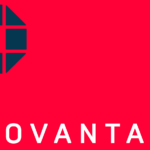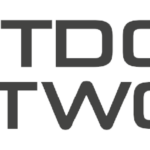
 Mercia Lampen, Digital Media Strategist, The MediaShop
Mercia Lampen, Digital Media Strategist, The MediaShop
Online advertising fraud is a huge problem globally in the digital industry, with cyber criminals stealing $3 – $5 million per day from advertisers. This issue was raised in 2004 by Google’s CFO, George Reyes as a major problem stating that fraud is the biggest threat to the internet economy. But what does the situation look like in South Africa?
Ad fraud is simply when a publisher, website, network, or influencer charges an advertiser for impressions, clicks, views, or leads that are not real. It can take many forms, including ad farms, pixel stuffing, botnets, ad stacking etc. All of these forms of ad fraud make advertisers pay for ads that are effectively worthless to them as they are never actually seen by a consumer.
Awareness about ad fraud in South Africa is growing and more clients are starting to take note, but it is still a big problem globally, where ad fraud is estimated to cost advertisers about $7 billion annually…but both publishers and agencies are starting to take more decisive steps.
The IAB’s (Interactive Advertising Bureau) focus is to create a “better internet”. They’ve developed Ads.txt to assist publishers in the fight against ad fraud, to receive the revenue owed to them and to increase market transparency. Ads.txt is an acronym for Authorised Digital Sellers. This piece of technology was introduced in an effort to eliminate the ability to profit from counterfeit or spoofed inventory in the open digital advertising ecosystem supply chain. Ads.txt allows publishers and content owners the ability to authorise and publicly declare who is allowed to sell their inventory.
Agencies are partnering with global inventory sources, technologies, and third parties to tackle the problem head on. Through the use of black lists that ban sites, networks and publishers that are known to engage in ad fraud, to third party verification technology that can identify, during the bidding process, whether a site is fraudulent (and if it is, ad impressions will be disqualified from appearing on that website), agencies are working hard to ensure that ad fraud is eliminated for their brands, before it happens!
Ad fraud should not be confused with brand safety, which is a different problem altogether. Brand safety is the process of ensuring that advertisers’ ads don’t appear next to any objectionable content that the brand would not want to be associated with.
This is also something that is gaining awareness amongst advertisers, and that agencies are taking very seriously. But the reality is that brand safety is not just a digital problem. There are plenty of examples and instances of print, TV, radio and OOH ads appearing next to content that would be deemed harmful to the brand.
Overall, as digital becomes a bigger and bigger part of client’s media mixes, we will increasingly see more and more industry stakeholders addressing ad fraud, brand safety, and viewability in their scope of work and client contracts.
At the end of the day, it is important that clients are getting what they are paying for!
At The MediaShop we take issues such as ad fraud, brand safety, and ad verification very seriously. We employ a number of technologies and tools to ensure that our client’s ads don’t fall victim to fraud, only appear in brand safe environments, and we use third party verification services such as MOAT and IAS to ensure that our clients are getting what they’re paying for!
- MRF Unveils Latest MAPS® Data - 20th February 2025
- The BRC announces changes to the board and updates for 2025 - 17th December 2024
- Top 50 DSTV TV programmes – October 2024 - 12th November 2024






